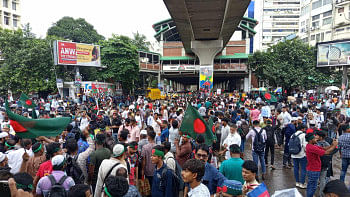Demystifying non-tariff barriers in South Asia
In the initial years of SAARC in the 1980s, the popular hypothesis for the reason behind limited intra-regional trade was the prevailing high tariff rate among the member countries. High tariff rates have come down substantially over the years since the formation of SAARC, due to increased globalisation of trade, and establishment of the WTO regime and the South Asian Free Trade Agreement (SAFTA). Despite significant reduction in tariff rates in the region, the intra-SAARC trade has been as static as before, i.e. about only 5 percent of the total trade of this region. Now the popular hypothesis is that it is not the high tariff rates, but the Non-Tariff Measures (NTMs) and the resulting trade barriers, i.e., Non-Tariff Barriers (NTBs) which are the main reasons behind limited intra-regional trade in South Asia. This view is reflected in many contemporary studies and documents.
NTMs are generally defined as policy measures other than ordinary customs tariffs that can potentially have an economic effect on international trade in goods, changing quantities traded or prices, or both (UNCTAD, 2013). In contrast, NTBs are thought to be policy measures that surely affect the quantity traded and prices, and have proven discriminatory effects against foreign firms (as pointed out in a paper by A. Nicita and Peters for the WTO workshop titled 'The Effects of NTMs on the Exports of Small Economies,' Geneva, October 23, 2013).
The UNCTAD classification of NTMs comprises technical and non-technical measures, such as sanitary or environmental protection measures, technical barriers to trade (TBTs) and other traditional instruments of commercial policy, e.g. quotas, price control, exports restrictions, or contingent trade protective measures, as well as other behind-the-border measures, such as competition, trade-related investment measures, government procurement or distribution restrictions. This classification acknowledges the existence of measures and does not judge on legitimacy, adequacy, necessity or discrimination of any form of policy intervention used in international trade (United Nations Conference on Trade and Development, Geneva, 2013).
Detailed information, and appropriate and specific analysis is required for better understanding of the impacts of NTMs on trade. It is important to emphasise that many NTMs are legitimate and thus cannot be negotiated away. For example, sanitary and phytosanitary (SPS) measures and TBT are there to protect consumers and environment; pricing and licenses are there to regulate domestic markets; anti-dumping duties, subsidies, quotas are there to protect domestic firms; and rules of origin is there to avoid unintended trade deflections.
Regardless of whether NTMs are imposed with protectionist intent or to address legitimate market failures, NTMs often impose additional costs on trading, and thus may have substantial effects on trade (Nicita and Peters, 2013). And these costs may be higher for some countries or firms than for others. For example, compliance costs are often fixed costs when small firms are in a disadvantageous position. Most of the small and medium-sized firms in South Asia face this challenge, especially with respect to meeting the SPS and TBT standards. Therefore, there is a need to develop the capacities of these firms so that they can meet the justified SPS and TBT standards in other countries. In this regard, technical assistance in their production and export processes is required, and different aid for trade and similar initiatives should be put in place on a priority basis. Also, there is a need to strengthen the capacities of the National Standards Authorities so that certificates issued by them are accepted in other countries. Furthermore, there is a need for harmonisation of standards, custom procedures and establishing mutual recognition principles in South Asia through regionally coordinated efforts.
Cost of complying is often dependent on infrastructure. Since the intra-regional trade in South Asia happens predominantly through land borders, a large part of the NTM-related complaints in South Asia are linked to weak infrastructure at land custom stations in South Asian countries, as well as to the lack of testing and laboratory facilities near the stations. In this process, many legitimate NTMs turn into NTBs, affecting the intra-regional trade. Therefore, improvements in relevant infrastructure should be a top priority.
Due to various procedural obstacles, which are related to complicated bureaucratic process, delays, corruption, and frequent changes in the policies, many legitimate NTMs turn into NTBs. In South Asia, a significant part of the NTBs is related to procedural obstacles. Therefore, policy efforts are critical to ensure that NTMs serve their intended legitimate purposes.
Policymakers in respective countries of South Asia, while negotiating for streamlining NTMs and reducing NTBs at the regional level, need very clear analysis, information and updated data on NTMs/NTBs for all South Asian countries. These data and analysis need to be relevant with concrete examples so that effective measurable actions can be undertaken. Analysis should emphasise on the respective roles and responsibilities for both home and partner countries in solving the problems.
The writer is Professor, Department of Economics, University of Dhaka, Bangladesh, and Executive Director, South Asian Network on Economic Modeling (SANEM).
Email: [email protected].

 For all latest news, follow The Daily Star's Google News channel.
For all latest news, follow The Daily Star's Google News channel. 



Comments